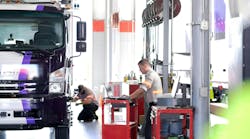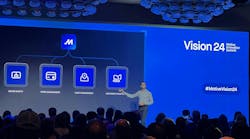This month I'd like to weigh in on the energy crisis. But before I get started, here are a few basic assumptions. First, we'll continue to increase our use of energy in the long term. Second, our ability to pay for expensive, pollution-free alternative forms of energy is limited. Third, we have to take the rest of the world into account since energy sources need to serve everyone.
There are four parts to the energy situation that must be addressed: source, creation, transmission and use. I'm going to tackle source and creation this month.
To begin with, whatever energy sources we decide to use must be abundant, readily available, easily transported and easily converted to final energy formats at a reasonable cost. While sources such as solar energy, wind energy, tidal movement energy, hydrogen-fuel generation and radioactive energy are abundant, they're not always readily available nor easily transported. And while they can be converted to electricity, conversion to mobile energy requirements is more difficult and often cost-prohibitive, unless it's subsidized.
I think that subsidies should be encouraged — but with a term limit. If the subsidized source does not become market-sufficient within that time, it should be allowed to die on the vine. We should continue to invest in alternative energies such as nuclear fusion and hydrogen generators. We should also expect the private sector to develop energy-efficient alternatives to machinery and appliances.
As far as energy sources are concerned, we should be able to resolve most of the stumbling blocks. What remains to be seen, however, is how quickly we can do it, and at what price.
The creation of energy has always had the not-in-my-backyard cloud hanging over it. Most people want the energy created, in the format they prefer, at a location far enough away so that they don't have to worry about odor, waste-disposal or breakdown-related problems.
Finally, we're also likely to change our minds from time to time about the acceptable standard for energy format; the production process will have to accommodate that change. So if we decide to charge our electric cars at night, the producer won't be able to use off-peak power production for storage.
It seems to me that if you want the energy, you should be willing to have it produced in your “backyard,” or as close as is reasonably possible. This will make it easier to store as much raw material as you want to cover the power swings in your area. Paying for storage is much cheaper than buying the finished product on the spot market.
In addition, we already know that producing energy in a number of smaller plants is cost-effective and can contribute to stabilizing the supply in the grid at any given point in time. There is far less disruption when one or two smaller producers go down for repairs than when one large producer goes down.
Furthermore, we should have no more than two national standards for any form of liquid or gas fuel to be used in our vehicles. This would help make production and distribution systems not only significantly more cost-effective, but also more effective in terms of distribution efforts. And again, the fuel should be produced as close to the point of consumption as possible.
Finally, the President's panel is right: For now, we need to increase energy sources while finding ways to reduce transmission loss and improve the overall efficiency of energy usage. The short-term pain of energy shortages leads to the long-term pain of slower growth and unemployment. I opt for increasing energy sources while making outlaws of energy gluttons — be they light bulbs or aging equipment, like me.


